
1
41457-01 7/2000
®
Installation and Operation Manual
For Hunter Ceiling Fans
41457-01 7/2000
®
SINCE 1886

2
41457-01 7/2000
®

3
41457-01 7/2000
®
CONGRATULATIONS!
Your new Hunter ceiling fan is an
addition to your home or office that
will provide comfort and perfor-
mance for many years. This manual
gives you complete instructions for
installing and operating your fan.
We are proud of our work. We ap-
preciate the opportunity to supply
you with the best ceiling fan avail-
able anywhere in the world.
Before installing your fan, record the
following information for your
records and warranty assistance.
Please refer to the carton and the
Hunter nameplate (located on top
outside fan motor housing) for the
proper information.
© 2000 Hunter Fan Co.
7/2000
Model Name __________________
Catalog No. ___________________
Serial No. _____________________
Date Purchased ________________
Where Purchased ______________
_____________________________
Please attach your Hardware Sheet
and Exploded View Sheet to this
manual for future reference.
Attach Your Receipt
or a Copy of
Your Receipt Here

4
41457-01 7/2000
®
CONTENTS
Important Information....................................................................................................................................... 5
Step 1 - Getting Ready ...................................................................................................................................... 6
Step 2 - Installing the Ceiling Plate.................................................................................................................... 8
Step 3 - Assembling Pipe/Ball Assembly........................................................................................................... 10
Step 4 - Assembling the Fan............................................................................................................................ 12
Step 5 - Hanging the Fan ................................................................................................................................ 14
Step 6 - Installing the Remote ......................................................................................................................... 15
Step 7 - Wiring the Fan ................................................................................................................................... 18
Step 8 - Attaching the Canopy........................................................................................................................ 20
Step 9 - Assembling Fan Blades....................................................................................................................... 21
Step 10 - Attaching the Switch Housing.......................................................................................................... 23
Step 11 - Installing Light Fixture ...................................................................................................................... 26
Operating Your Hunter Fan and Remote ......................................................................................................... 30
Cleaning and Maintenance ............................................................................................................................. 32
Troubleshooting .............................................................................................................................................. 33

5
41457-01 7/2000
®
IMPORTANT INFORMATION
not lock the circuit break-
ers in the off position, se-
curely fasten a prominent
warning device, such as a
tag, to the service panel.
• All wiring must be in accor-
dance with national and lo-
cal electrical codes and
ANSI/NFPA 70. If you are
unfamiliar with wiring, you
should use a qualified elec-
trician.
• To reduce the risk of per-
sonal injury, do not bend
the blade attachment sys-
tem when installing, bal-
ancing, or cleaning the fan.
Never insert foreign objects
between rotating fan
blades.
DO YOU NEED HELP?
To install a ceiling fan, be sure you
can do the following:
• Locate ceiling joist or other suit-
able support in ceiling.
• Drill holes for and install wood
screws.
• Identify and connect electrical
wires.
• Lift 40 pounds.
If you need help installing the fan,
your Hunter fan dealer can direct you
to a licensed installer or electrician.
• To reduce the risk of fire,
electrical shock, or motor
damage, do not use a solid-
state speed control with
this fan. Use only Hunter
speed controls.
WARNINGS
• To avoid possible electrical
shock, before installing
your fan, disconnect the
power by turning off the
circuit breakers to the out-
let box and associated wall
switch location. If you can-
CAUTIONS
• Read entire booklet care-
fully before beginning in-
stallation and save these
instructions.
• To reduce the risk of per-
sonal injury, attach the fan
directly to the support
structure of the building ac-
cording to these instruc-
tions, and use only the
hardware supplied.

6
41457-01 7/2000
®
GATHERING THE TOOLS
You will need the following tools for
installing the fan:
• Electric drill with 9/64" bit
• Standard screwdriver
• Phillips-head screwdriver
• Wrench or pliers
OPTIONAL ACCESSORIES
Consider using Hunter’s optional ac-
cessories, including a wall-mounted
or remote speed control. To install and
use the accessories, follow the instruc-
tions included with each product.
For quiet and optimum performance
of your Hunter fan, use only Hunter
speed controls.
STEP 1 - GETTING READY
PREPARING THE FAN SITE
The location of a ceiling fan and how
the fan is attached to the building
structure are essential for reliable
operation, maximum efficiency, and
energy savings. For this reason, we
have included a separate booklet —
“Guide to Choosing and Preparing
a Ceiling Fan Site” — to help you
select the best location for your fan.
The booklet also provides informa-
tion to ensure your fan support and
electric outlet box meet UL-approved
safety codes for ceiling fans.
The instructions in this installation
manual assume that you have used
“Guide to Choosing and Preparing
a Ceiling Fan Site” to pick the fan
location and make certain the proper
fan support and outlet box are in-
stalled.
CHECKING YOUR FAN PARTS
Carefully unpack your fan to avoid
damage to the fan parts. Check for
any shipping damage to the motor
or fan blades. If one of the fan blades
was damaged in shipment, return all
the blades for replacement.
Hint: If you are installing more than
one fan, keep the fan blades
in sets, as they were shipped.
The fan includes a separate diagram
of the screws and other small parts
needed for the fan. Keep this dia-
gram handy for identifying parts dur-
ing installation; the diagram indicates
the step in which each part is used.
If any parts are missing or damaged,
contact your Hunter dealer or call
Hunter Parts Department at
901-248-2222.

7
41457-01 7/2000
®
INSTALLER’S CHOICE®
This patented 3-position mounting
system provides you maximum instal-
lation flexibility and ease. You can
install your Hunter fan in one of three
ways. The steps in this manual in-
clude specific instructions for the fan
mounting method of your choice. For
a ceiling 8 feet or higher, standard
mounting is recommended.
Flush Mounting (Figure 1a) fits
close to the ceiling, for low ceilings
less than 8 feet high.
Standard Mounting (Figure 1b)
hangs from the ceiling by a connec-
tor pipe (included), for ceilings 8 feet
or higher. For ceilings higher than
eight feet, you can purchase Hunter
extension rods. All Hunter fans use
sturdy 3/4" diameter pipe to assure
stability and wobble-free perfor-
mance.
Angle Mounting (Figure 1c) hangs
from a vaulted or angled ceiling.
Figure 1c - Angle Mounting
Figure 1b - Standard Mounting
Figure 1a - Flush Mounting
10"
12"
34° Max
Pitch
12
8

8
41457-01 7/2000
®
STEP 2 - INSTALLING THE CEILING PLATE
4. Align the slotted holes in the ceil-
ing plate with the pilot holes in
the wood support structure.
Note: The isolation pads should
be flush against the ceiling.
1. Drill two pilot holes into the wood
support structure through the
outermost holes on the outlet
box. The pilot holes should be
9/64" in diameter by 2 3/4" in
depth.
2. Bring the lead wires around the
sides of the ceiling plate. Thread-
ing the lead wires through the
hole in the middle may cause
problems when installing the re-
mote and trying to close the
canopy.
3. Your fan comes with two neo-
prene noise isolators. Position the
isolators between the ceiling plate
and ceiling by inserting the raised
areas on each isolator into the
holes in the ceiling plate. Refer to
Figure 2a.
Figure 2a - Adding Isolators to Ceiling
Plate
Figure 2b - Correct Position of Ceiling
Plate for Angle Mounting
Ceiling Plate
Hooks
Isolators
Ceiling
Plate
For Angle Mounting Only: Be
sure to orient the ceiling plate so
that the two hooks point up to-
wards the ceiling peak as shown
in Figure 2b. Note: You will use
the hooks to support the fan
while wiring the fan.

9
41457-01 7/2000
®
Figure 2c - Attaching Ceiling Plate to
2 x 4 Brace
2 x 4 Brace
Ceiling Joist
Ceiling
Outlet Box
Ceiling
Plate
Flat
Washer
3" Wood
Screw
5. Place a flat washer on each of the
two 3" screws and pass the
screws through the slotted holes
in the ceiling plate as shown in
Figure 2c.
6. Tighten the screws into the 9/64"
pilot holes; do not use lubricants
on the screws. Do not over-
tighten.

10
41457-01 7/2000
®
continued
As discussed in STEP 1 - GETTING
READY, your Hunter fan can be in-
stalled in a standard mounting posi-
tion.
Included with the fan are two pipes:
one 3" long pipe/ball assembly for
standard mounting on 8' ceilings and
one 12" long pipe for 9' ceilings and
higher. See Figure 3a.
If you are going to install the fan us-
ing the standard mounting, go to
STEP 4 - ASSEMBLING THE FAN.
If you are going to install the fan us-
ing the 12" long pipe for 9' ceilings
or higher, complete the steps below.
STEP 3 - ASSEMBLING PIPE/BALL ASSEMBLY
3. Remove the ball from the pipe.
4. Remove the pin from the pipe.
Figure 3a - Pipes
Figure 3b - Removing ball assem-
bly
REMOVING BALL ASSEMBLY
For the following steps refer to
Figures 3b and 3c.
1. Locate the 3" pipe/ball assembly.
2. Remove the positioning screw
from the top of the ball.
NOTE: The ball will become
loose and should slide down the
pipe.
3" Pipe/Ball
Assembly
12" Pipe
Pin
Positioning Screw
Leadwire
Assembly
Ball
Ground
Screw

11
41457-01 7/2000
®
8. Insert the pin into the two holes
in the 12" pipe so that the pin is
placed evenly in the hole.
9. Insert the threaded end of the
pipe into the flat side of the ball.
10.Align the cutouts in the ball with
the pin and the ground screw as-
sembly.
11.Slide the ball up the pipe until it
hits the pin.
12.Insert and tighten the positioning
screw into the ball so that the
head of the screw is tight on the
end of the pipe.
NOTE: Make sure that the ball
is positioned so that it is level or
straight.
CAUTION
Do not overtighten the posi-
tioning screw as it may cause
the ball to seat improperly, re-
sulting in fan wobble and the
fan hanging crookedly.
WARNING
• Failure to complete the
steps above properly could
result in the fan falling.
Figure 3c - 12" pipe assembly
CAUTION
Make sure that the leadwire
assembly is pointing straight
up and away from the pipe.
WARNING
• To avoid possible electrical
shock, the ground screw
must be tightened securely.
5. Carefully loosen and remove the
ground screw/leadwire assembly
from the pipe.
6. Locate the 12" pipe.
7. Insert and tighten the ground
screw/leadwire assembly into the
small screw hole on one end of
the 12" pipe.

12
41457-01 7/2000
®
STEP 4 - ASSEMBLING THE FAN
Use the Step 4 instructions for the
type of mounting you have selected:
standard, angle, or flush.
STANDARD AND ANGLE
MOUNTING
For Standard 8-foot Ceilings and
Higher
1. Insert the pipe through the
canopy as shown in Figure 4a.
Feed wires from the fan through
the canopy then through the
pipe.
2. Screw pipe into fan assembly un-
til tight. IMPORTANT! Tighten
pipe setscrew as shown in Figure
4a.
CAUTION
The pipe has a special coating
on the threads. Do not remove
this coating; the coating pre-
vents the pipe from unscrew-
ing. Once assembled, do not
remove the pipe.
FLUSH MOUNTING
For Low Ceilings
1. Tighten or remove pipe setscrew.
Fit the canopy over the hanger
Figure 4a - Inserting Pipe through
Canopy
Pipe
Canopy
Pipe
Setscrew
Figure 4b - Placing Canopy and
Washer Over Adapter
Assembly
Washer
Canopy
Adapter
Top of Fan
adapter as shown in Figure 4b.
Make sure the canopy fits snugly
against the fan assembly with no
space between the pieces.
2. You will find a large assembly
washer included with the fan.
Place the washer over the adapter
and canopy as shown in Figure
4b.

13
41457-01 7/2000
®
Figure 4d - Attaching Canopy to Fan
Assembly
Assembly
Washer
Adapter
Threaded
Hole
Figure 4c - Positioning Assembly
Washer Slots over Threaded Holes
3. Position the slots in the assem-
bly washer over the threaded
holes in the adapter as shown
in Figure 4c.
4. Attach the canopy tightly to the
fan assembly with three #8-32
assembly screws and lockwashers
as shown in Figure 4d.
Assembly Screw
and Lockwasher

14
41457-01 7/2000
®
STEP 5 - HANGING THE FAN
Figure 5b - Assembled Fan Hanging
from Ceiling Plate Hooks
Ceiling
Plate
Figure 5a - Attaching Slots on Canopy
to Ceiling Plate Hooks
1. Disconnect the power by turning
off the circuit breakers to the out-
let box and associated wall switch
location.
2. Tilt and hang the assembled fan
from the ceiling plate hooks. Slip
two rectangular canopy slots over
ceiling plate hooks as shown in
Figures 5a and 5b.
Note: To hang the fan you must
tilt the canopy to an almost verti-
cal position so the canopy slots
come down over the ceiling plate
hooks.
If you are installing the remote
continue to STEP 6, INSTALLING
THE REMOTE, otherwise skip to
STEP 7, WIRING THE FAN, on page
18.

15
41457-01 7/2000
®
STEP 6 - INSTALLING THE REMOTE
Remote Model #: UC7067RC
Ratings: 120 VAC, 60 Hz, 1.0 Amp Fan
250 Watts incandescent light
• To avoid possible electrical
shock, before installing the
remote, be sure that all
power is disconnected by
turning off the circuit
breakers to the outlet box.
• All wiring must be per-
formed in accordance with
national and local electrical
codes. If you are unfamil-
iar with the wiring codes,
you should use a qualified
electrician.
• To avoid overheating and
possible damage to other
equipment, do not install
to control a receptacle,
WARNINGS
Note: This device complies
with Part 15 of the FCC
Rules. Operation is subject
to the following two condi-
tions: (1) this device may not
cause harmful interference,
and (2) this device must ac-
cept any interference re-
ceived, including interfer-
ence that may cause undes-
ired operation.
SETTING UP THE TRANSMITTER
1. Remove the battery cover from
the transmitter by pressing down
on the arrow and sliding the cover
off. Refer to Figure 6a.
continued
fluorescent light fixture,
motor operated appliance,
or transformer-supplied
appliance. Use only to con-
trol one paddle-blade ceil-
ing fan and incandescent
light fixture.
Figure 6a - Setting the Code on the
Transmitter
Dip Switches
9 Volt Battery
Battery Cover

16
41457-01 7/2000
®
2. Slide the dip switches to the de-
sired on/off position using a ball-
point pen or small-head screw-
driver. Remember the on/off po-
sition of the switches for use
when setting up the receiver.
Note: Be sure to change the fac-
tory default switch settings to
your own unique code.
3. Install a 9 volt battery (not in-
cluded). Refer to Figure 6a on
page 15.
Note: To prevent damage to the
transmitter, remove the battery
if it is not used for long periods
of time.
4. Replace the battery cover on the
transmitter.
5. Mount the remote holder using
the two screws provided with the
remote kit. Slide out center piece
on the holder to see screw holes.
Replace center piece after mount-
ing to wall. Refer to Figure 6b.
6. The transmitter can be placed on
the remote holder for conve-
nience or safe-keeping.
INSTALLING THE RECEIVER
1. Slide the dip switches to the same
on/off position as the transmitter
using a ball-point pen or small-
head screwdriver. Refer to Figure
6c.
Figure 6b - Mounting the Remote
Holder
Figure 6c - Setting the Code on the
Receiver
ON
1234
ON
Dip Switches
Screw Hole
Screw Hole
Screw Hole
Cover

17
41457-01 7/2000
®
2. Make wiring connections using
the wire nuts supplied. To con-
nect the wires, place bare metal
leads together. Place a wire nut
over the intertwined length of
wire and twist clockwise until
tight as shown. Refer to Figure
6d.
Figure 6e - Positioning the Receiver
Inside of the Canopy
3. Place receiver inside the canopy
under the ceiling plate. Refer to
Figure 6e. Be sure to keep the
antenna positioned securely on
top of the receiver. Do not modify
or damage the antenna wire, as
control performance may be re-
duced.
Connect ..............................................................................................................To
Green wire from fan .................................................................... Bare ground wire
Black wire from receiver .............................................................. Black supply wire
White wire from receiver ............................................................ White supply wire
White wire from receiver .........................................................White wire from fan
Black wire from receiver ........................................................... Black wire from fan
Black/White wire from receiver.................................... Black/White wire from light
Once receiver is installed and
power is turned back on, DO
NOT pull the fan or light chains
while power is connected.
WARNING
Ceiling
Plate
Antenna
Receiver
Canopy
Figure 6d - Wiring the Receiver
Black/
White
Black
Black
White
White
White
Black
Black/
White
AC
Power
In
Antenna
Note: For optimal performance,
the antenna should extend out-
side the canopy.
4. Continue to STEP 8, HANGING
THE FAN, on page 20.

18
41457-01 7/2000
®
CAUTION
Be sure no bare wire or wire
strands are visible after mak-
ing connections.
STEP 7 - WIRING THE FAN
1. You can use either one or two
wall switches to control the fan
and/or lights separately. Use con-
nection 1 on page 19 to
• control the light with a wall
switch and the fan with a
chain pull (one wall switch re-
quired)
• control the light with a chain
pull and the fan with a wall
switch (one wall switch re-
quired)
• control the light with one wall
switch and the fan with an-
other (two wall switches re-
quired)
Use connection 2 on page 19 if
there is no separate wall switch
power wire for the light fixture.
Note: Wall switches not included.
continued
2. Connect the wires as shown in
Figure 7a. To connect the wires,
place the bare metal leads to-
gether. Place a wire nut over the
intertwined length of wire and
twist clockwise until tight as
shown.
3. Separate the connected wires by
placing the green and white wires
on one side of the outlet box and
the black and the black/white
wires on the other side of the
outlet box.
4. Turn the connectors upward. Push
the wires gently into the outlet
box.

19
41457-01 7/2000
®
Bare or Green
Green
Approved
Connectors
Power
Wires
In
Ceiling
White
White
Black
Black/White
1
2
Connections:
Black
Wall Switch Wire For
Separate Control of Light Fixture
Ceiling
Plate
Outlet Box
2 x 4 Brace
Green Ground
Wire from Hanger
Pipe (not present
with flush mounting
option)
3 Wires
From Fan
(Note: Wall switch
must be acceptable
as a general-use
switch.)
Connect Blk/Wht Wire from fan
to Wall Switch Wire for separate
control of light fixture, or
Connect Blk/Wht Wire from fan
to Ceiling Black Wire if there
is no separate Wall Switch Wire
for the light fixture.
1
2
Figure 7a - Wiring The Fan

20
41457-01 7/2000
®
STEP 8 - ATTACHING THE CANOPY
Figure 8a - Attaching Canopy to
Ceiling Plate
Figure 8b - Canopy Tabs and Grooves
in Hanger Ball
Sub-steps 1 and 2 apply to Flush,
Standard, and Angle mounting. Sub-
step 3 applies to Standard and Angle
mounting only.
1. Swing the fan up so as to align
the canopy screw holes with the
mounting holes on the ceiling
plate. Refer to Figure 8a.
2. Install and tighten the two #10-
32 x 1/2" mounting screws.
3. For Standard and Angle
Mounting Only: In addition to
sub-steps 1 and 2, lift the fan
housing towards the ceiling and
rotate the fan until each canopy
tab engages a groove in the
hanger ball as shown in Figure 8b.
Note: If the tabs are already en-
gaged, do not rotate.
WARNING
Failure to complete sub-steps
1 through 3 could cause fan to
fall. (Sub-step 3 not applicable
for flush mounting.)
Ceiling
Plate
Canopy
Groove in
Hanger
Ball
Canopy
Tab
Groove in
Hanger Ball
Page is loading ...
Page is loading ...
Page is loading ...
Page is loading ...
Page is loading ...
Page is loading ...
Page is loading ...
Page is loading ...
Page is loading ...
Page is loading ...
Page is loading ...
Page is loading ...
Page is loading ...
Page is loading ...
Page is loading ...
-
 1
1
-
 2
2
-
 3
3
-
 4
4
-
 5
5
-
 6
6
-
 7
7
-
 8
8
-
 9
9
-
 10
10
-
 11
11
-
 12
12
-
 13
13
-
 14
14
-
 15
15
-
 16
16
-
 17
17
-
 18
18
-
 19
19
-
 20
20
-
 21
21
-
 22
22
-
 23
23
-
 24
24
-
 25
25
-
 26
26
-
 27
27
-
 28
28
-
 29
29
-
 30
30
-
 31
31
-
 32
32
-
 33
33
-
 34
34
-
 35
35
Hunter Fan 41457-01 User manual
- Type
- User manual
Ask a question and I''ll find the answer in the document
Finding information in a document is now easier with AI
Related papers
-
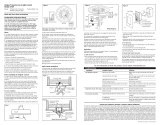 Hunter Fan 27189 User manual
Hunter Fan 27189 User manual
-
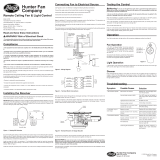 Hunter Fan 24750 User manual
Hunter Fan 24750 User manual
-
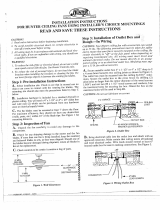 Hunter Fan 21744 Owner's manual
Hunter Fan 21744 Owner's manual
-
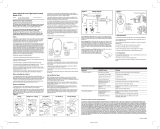 Hunter Fan 27149 Owner's manual
Hunter Fan 27149 Owner's manual
-
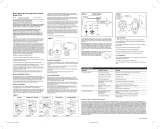 Hunter Fan 27148 Owner's manual
Hunter Fan 27148 Owner's manual
-
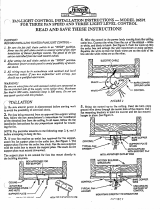 Hunter Fan 26591 User manual
Hunter Fan 26591 User manual
-
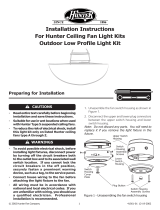 Hunter Fan 28388 Owner's manual
Hunter Fan 28388 Owner's manual
-
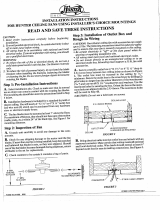 Hunter Fan 25827 Owner's manual
Hunter Fan 25827 Owner's manual
-
Hunter Fan 64971 Owner's manual
-
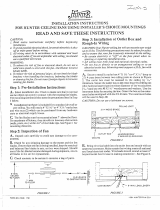 Hunter Fan 23497 Owner's manual
Hunter Fan 23497 Owner's manual
Other documents
-
Design House 578294 Installation guide
-
Design House 577791 Operating instructions
-
Design House 577783 Operating instructions
-
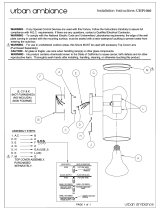 urban ambiance UHP1060 Installation guide
urban ambiance UHP1060 Installation guide
-
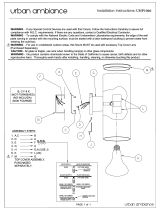 urban ambiance UHP1066 Installation guide
urban ambiance UHP1066 Installation guide
-
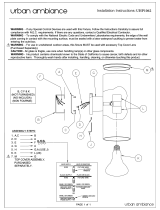 urban ambiance UHP1062 Installation guide
urban ambiance UHP1062 Installation guide
-
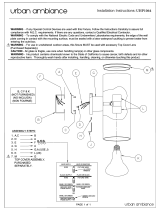 urban ambiance UHP1064 Installation guide
urban ambiance UHP1064 Installation guide
-
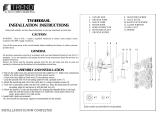 Trend Lighting TW40004ASL User manual
Trend Lighting TW40004ASL User manual
-
AF Lighting 8591-TL Installation guide
-
Design House 154088 Installation guide
















































